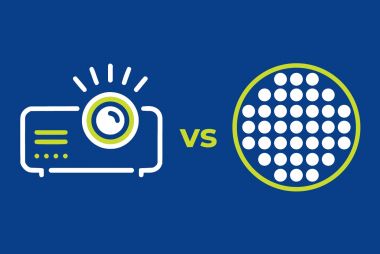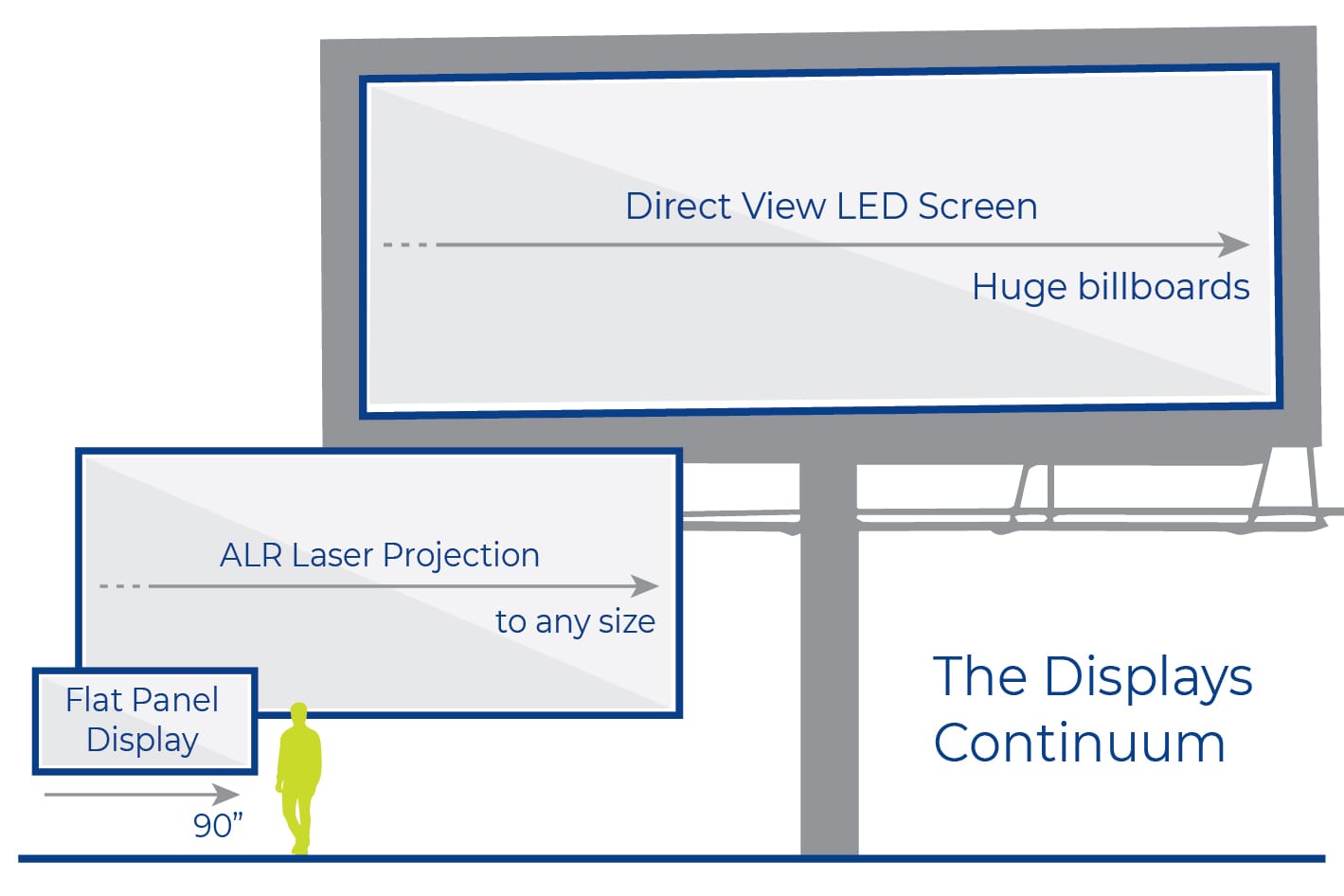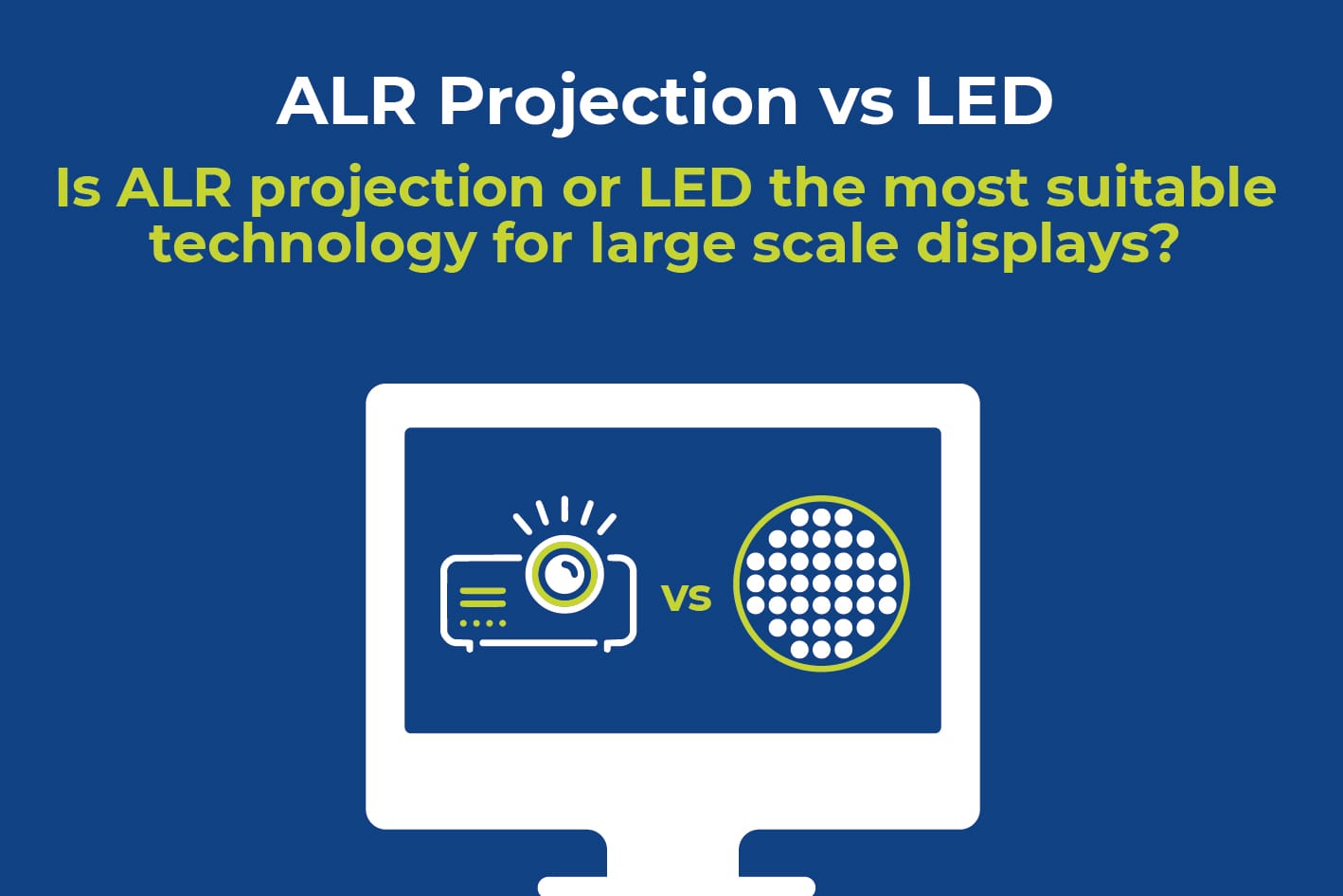Projection vs LED
Optical ambient light-rejecting (ALR) projection displays are an essential part of the toolkit for those specifying larger images - whether for signage, meeting rooms, teaching or Microsoft Teams Rooms.

Although dvLED displays are the perfect go-to choice for larger billboards, digital media etc, they are not suitable for all applications, specifically, their use in any application where viewers will look at content for extended periods (teaching, meetings etc) can be problematic and an expensive way of solving problems that may not exist.
Let’s unpack the issues. In detail.
Find out more about ALR Projection here


Projection vs. LED - Brightness
Under normal meeting and teaching lighting conditions (300-500 lux) the maximum image luminance (‘brightness’) needed is around 300cd/m2. Many dvLEDs offer up to 5,000cd/m2 - and more - which is expensive overkill. Yes, the brightness can be reduced, but dvLED brightness is created by its flicker, so suppressing it reduces dynamic range, contrast etc - and why pay so much more for unused brightness?
ALR projection is perfect for image luminances (‘brightness’) up to 750-1000cd/m2. However, 200-300 is the sweet spot for teaching, Teams Rooms and hybrid workspaces.
ALR projection can be specified exactly for each location and application.
Projection vs. LED - Contrast
Image contrast is usually determined by the ambient lighting conditions and dvLED is top of the class for outdoor and extreme light scenarios. And normal ‘old’ projection is often considered to be weak here when using standard white projection screens (or projecting onto the wall!).
ALR projection works brilliantly in most brightly lit indoor spaces.
Remembering that contrast is the difference between image white and black levels - and too high white levels create eyestrain - the enhanced black levels of ALR projection make it the go-to choice.
Projection vs. LED - Size
ALR projection is infinitely scalable. You can have any size or aspect ratio.
If you want a particular resolution with dvLED then the size is determined by the display specification. The popular 1.2mm dvLED pixel pitch is therefore the reason that HD displays are around 138” in this class.
The cost per m2 of projection is often a fraction of the cost of dvLED so you can choose the size your viewers need rather than the size you can afford.
Projection vs. LED - Resolution
At a distance, the display resolution is a lower priority, so dvLED is well-suited for digital signage in shopping malls etc.
The dvLED displays in the 0.9mm pitch are an exciting development, only currently affordable in high budget projects.
ALR projection can be HD, WUXGA, WQGA or 4K UHD as standard, but multi-projector systems can provide megapixel displays up to virtually any resolution.
Projection vs. LED - Fill factor
How close can viewers be?
dvLED does not have pixels in the way that projection and backlit LED flat panels do, They have little ‘pinpricks’ of light from their spaced-out diodes arrays. Get close and you can see this clearly. This is low ‘fill factor’.
Standard 1.2mm dvLED should not be used for meeting spaces as the closest recommended viewing positions are usually halfway down the table.
ALR projection has full fill factor, meaning that viewers can be as close to the screen as they like without suffering any discomfort.
Projection vs. LED - Weight
ALR screens are lightweight per m2 and can be mounted on standard walls and surfaces without needing additional strengthening or pattressing.
Projection vs. LED - Heat
dvLED screens emit heat which adds a load to the air conditioning system.
Projection screens emit no heat at all. Modern laser projectors emit very little heat.
Projection vs. LED - Fire
Many large screen installations use ALR projection because building fire regulations restrict the use of dvLED in locations which act as emergency exits and access.
Want to know more?
Find out more about ALR Projection vs dvLED and learn the pros and cons of these different display technologies and when to use them by watching our webinar here.
